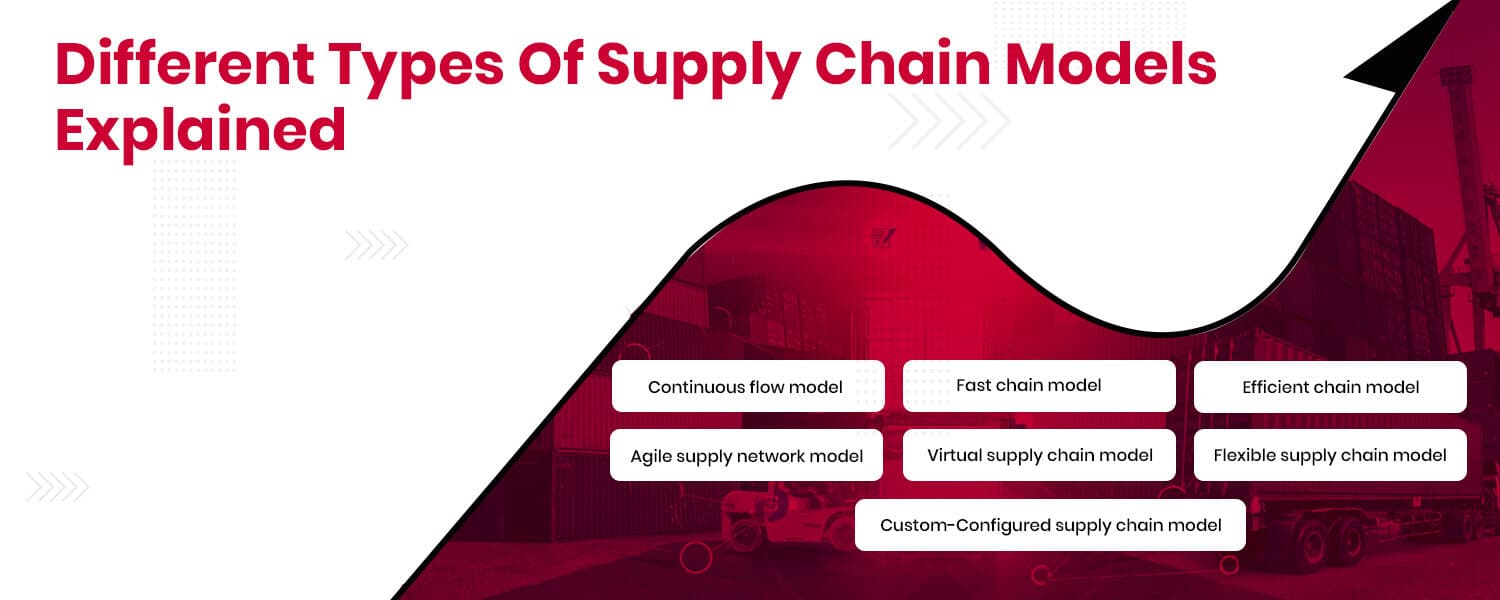Understanding the Fundamentals of Supply Chain Management
Table of Contents

- jaro education
- 10, January 2024
- 9:00 am
In modern commerce, Supply Chain Management (SCM) emerges as a pivotal force, orchestrating the entire journey of goods and services from conception to consumer. The importance of SCM cannot be overstated, as it serves as the backbone of operational efficiency and strategic advantage for businesses across industries.
Since its establishment in 1998, the National Institute for Transport and Logistics (NITL) of Ireland has been diligently working to formulate the definition of supply chain management (SCM). This pursuit has been motivated by several factors and this blog unravels the fundamental understanding of supply chain management and the importance of SCM, illuminating its role in optimizing processes, minimizing costs, and ultimately enhancing customer satisfaction.
What is Supply Chain Management (SCM)?
Supply Chain Management (SCM) is a comprehensive approach to overseeing the seamless flow of goods and services within and outside a business. It includes all the detailed steps needed to turn raw materials and parts into finished products and make sure they get to the customer on time. By making these processes work together better, SCM aims to make operations more efficient, reduce waste, and make customers happier in the end. A well-executed SCM strategy is instrumental in positioning a company competitively in the marketplace, fostering a strategic advantage through the synchronization and optimization of diverse supply chain activities.
To elevate operational effectiveness, individuals are encouraged to enrich their skill sets with a profound understanding of advanced supply chain management. In this context, the “Advanced Supply Chain Management and Role of Analytics” course offered by IIM Kozhikode emerges as a valuable resource. Tailored to provide insights for both seasoned professionals and newcomers, the program aims to cultivate strategic leadership while navigating the complex intersection of strategy and supply chain analytics.
How Supply Chain Management Works?
Supply chain management embodies a continuous commitment by companies to enhance the efficiency and cost-effectiveness of their supply chains. The primary aim of SCM is to establish centralized control and connectivity across the entire lifecycle of a product, encompassing production, shipment, and distribution. This strategic coordination enables companies to eliminate redundant costs and unnecessary procedural steps, ultimately facilitating a swifter delivery of products to consumers.
Effective supply chain management involves meticulous oversight of internal inventories, production processes, distribution channels, sales activities, and the inventories of collaborating vendors. By maintaining tighter control over these interconnected elements, companies can achieve streamlined operations and improved resource allocation.
4 Fundamentals of Supply Chain of Management
These four fundamentals encompass the goals, the underlying philosophy, the concept of the “three flows,” and the dynamics of customer/supplier relationships. The subsequent elaboration provides a deeper understanding of these key elements.
1. SCM Objectives
Two main goals form the foundation of supply chain management (SCM) and influence its strategic approach. The first goal is to strive for higher standards of customer service that are suited to particular markets or market segments. This means coordinating the supply chain to meet the exact service standards set forth by the market. It becomes essential to comprehend and satisfy these customer service standards in order to plan and run the supply chain efficiently.
The second objective involves the optimization of the overall investment and cost associated with the supply chain. This approach requires a meticulous balance between delivering high-quality service and minimizing costs at every stage of the supply chain. The emphasis is not merely on cost reduction but on achieving an optimal cost structure that facilitates the desired level of customer service.
This service/cost approach is foundational to SCM, acknowledging the interconnected nature of providing excellent service while managing costs efficiently. It compels companies to navigate a delicate equilibrium, wherein they must not only comprehend the specific demands of their target markets but also strategically eliminate non-value-added elements (NVAs) throughout the supply chain. By doing so, companies can enhance efficiency, eliminate waste, and position themselves competitively by delivering superior customer value at an optimized cost.
2. SCM Philosophy
The second fundamental emphasizes the complex journey of a product or service to reach the final consumer, who is the main source of revenue in the chain. This involves a complex series of transactions and movements among various companies forming the complete supply chain. Any inefficiency at any point in the chain can hinder the entire chain from realizing its full competitive potential. Unlike the traditional paradigm where companies competed with one another, modern supply chains are increasingly competing with other supply chains. The phrase “supply chain” emphasizes that the strength of the chain is contingent on the strength of its weakest link.
Businesses can be dissected into five core functions—buy, make, store, move, and sell—constituting the micro or internal supply chain. Traditionally, these functions operated in silos, often conflicting with one another. Supply chain management demands transcending these established boundaries, fostering stronger linkages between functions, and promoting collaborative efforts. Recognizing that the whole is greater than the sum of its parts emphasizes the need for seamless integration among purchasing and procurement (buy), production planning and control (make), warehouse management (store), transport management (move), and customer relationship management (sell). This holistic approach is pivotal for optimizing supply chain efficiency and overall business performance.
3. SCM Flow Management
To attain the highest levels of effectiveness and efficiency in a supply chain, it is imperative to manage material flows, financial transactions, and information dissemination in an integrated and holistic manner. This strategic orchestration should be driven by overarching service and cost objectives. When examining the macro chain, one observes the interconnected flow of material, funds, and information among the participating companies.
This macro perspective provides insight into how these vital components circulate within the broader supply chain. Moreover, this approach can be extrapolated to understand and optimize flows within the micro chain, emphasizing the need for synchronized management practices at both macro and micro levels. This comprehensive perspective ensures a well-coordinated and streamlined supply chain operation.
4. SCM Realtionships
In adopting a holistic approach, it becomes imperative to reassess the establishment and management of both internal and external customer/supplier relationships. Supply chain management (SCM) rejects the notion of a “zero-sum” game rooted in adversarial relationships; instead, it necessitates a “win-win” paradigm founded on collaborative partnerships. This principle extends to interactions within key “internal” supply chain functions—buy, make, store, move, and sell—as well as relationships between an organization and its external customers and suppliers.
A significant shift in recent years has witnessed the application of supply chain philosophy moving away from adversarial relationships across the supply chain. The emphasis now lies in cultivating relationships based on mutual trust, shared benefits, openness, and common goals and objectives, signifying a departure from the zero-sum mentality to a more cooperative and mutually beneficial approach.
Major Challenges in Supply Chain Management
Supply chain challenges impact manufacturers across all scales, illustrated by recent setbacks like Ford’s delay in shipping new F-150 vehicles due to battery issues. Such disruptions present opportunities for cultural improvements within organizations, especially for smaller manufacturers with streamlined decision-making processes.
Initiating the journey toward enhanced supply chain management involves addressing less complex elements first, fostering early successes and garnering support for tackling more intricate aspects. This approach promotes collaboration and constructive dialogue, laying the groundwork for continuous improvement.
Investing time and talent in implementing changes within an organization however demonstrates the ability to respond swiftly to evolving conditions, mitigating risks effectively. For smaller manufacturers, this agility becomes a strategic advantage, enabling them to navigate disruptions adeptly and instigate enduring improvements.
Types of Supply Chain Models
Supply chain models vary based on company goals, constraints, and strengths, shaping their approach to supply chain management (SCM). Different models cater to specific business characteristics. Here are key SCM models:

*nimbuspost.com
Continuous Flow Model
- Suited for established industries.
- Assumes consistent production of the same product.
- Thrives on predictability and stability in customer demand.
Agile Model
- Ideal for companies facing unpredictable demand or producing custom-order products.
- Prioritizes adaptability for swift responses to unforeseen needs.
- Emphasizes flexibility in operations to meet changing demands.
Fast Model
- Focuses on swiftly cycling through products with short life cycles.
- Exploits emerging trends by manufacturing and selling goods promptly.
- Relies on agility and responsiveness to capitalize on dynamic market landscapes.
Flexible Model
- Advantageous for businesses affected by seasonal fluctuations.
- Enables efficient adjustment of production levels to varying demand.
- Ensures scalability during peak periods and resource optimization.
Efficient Model
- Tailored for highly competitive industries with narrow profit margins.
- Optimizes SCM for efficiency, maximizing equipment utilization.
- Streamlines inventory management and order processing for cost-effectiveness.
Custom Model
- Tailored for industries with high specialization and demanding specifications.
- Allows companies to design a supply chain model addressing unique challenges.
- Particularly relevant in sectors like automotive manufacturing.
These models offer companies strategic options to optimize their supply chains based on specific industry dynamics, market conditions, and organizational requirements. Choosing the right model enhances operational efficiency, reduces costs, and positions the company for resilience and agility in a challenging business environment.
Examples of Supply Chain Management
Supply Chain Management (SCM) plays a crucial role in various industries, and here are some real-world examples of SCM in action:
1. Retail Industry: Walmart
Known for its efficient supply chain, Walmart utilizes advanced technology for demand forecasting and inventory management. The company has implemented RFID (Radio-Frequency Identification) technology to track products through the supply chain, enabling real-time visibility and reducing stockouts.
2. Technology Industry: Apple Inc
Apple’s global supply chain is a testament to effective supply chain management. The company coordinates with numerous suppliers worldwide to source components for its products. Apple’s just-in-time inventory system and strategic partnerships contribute to rapid product launches and reduced inventory costs.
3. Automotive Industry: Toyota
Toyota is well known for having invented lean manufacturing concepts, which are now essential to supply chain management. The organization places a strong emphasis on cutting down on waste, keeping inventory levels low, and making sure that materials move through its supply chain smoothly. The methodology used by Toyota has impacted SCM procedures in many industries.
4. Fast Food Industry: McDonald's
McDonald’s employs a sophisticated supply chain to ensure consistency and quality across its global network. The company coordinates with suppliers to deliver standardized ingredients, packaging, and equipment to its restaurants, ensuring a seamless and reliable supply of goods.
5. E-commerce Industry: Amazon
As a giant in the e-commerce sector, Amazon’s success relies heavily on its supply chain management capabilities. The company utilizes advanced algorithms for demand forecasting, robotic automation in warehouses, and a vast distribution network to provide fast and efficient order fulfillment.
6. Pharmaceutical Industry: Johnson & Johnson
Given the critical nature of pharmaceuticals, Johnson & Johnson has a complex and well-organized supply chain. The company emphasizes stringent quality control, regulatory compliance, and efficient distribution to ensure the timely delivery of healthcare products.
7. Fashion Industry: Zara
Zara has revolutionized the fashion industry with its fast-fashion model. The company leverages a highly responsive supply chain, allowing it to quickly adapt to changing fashion trends. Zara’s SCM focuses on short production cycles, flexibility, and in-house manufacturing.
These instances vividly demonstrate the impact of efficient Supply Chain Management (SCM) techniques on overall operational efficiency, cost reduction, and process optimization, leading to success in various industries. For professionals seeking to deepen their understanding and expertise in supply chain management, exploring these real-world examples provides valuable insights.
Understanding how these companies implement strategic SCM principles can inspire professionals to navigate the complexities of supply chain dynamics effectively. The Advanced Supply Chain Management and Role of Analytics course at IIM Kozhikode provides a unique opportunity to delve into these concepts and apply them in the evolving landscape of supply chain dynamics.
Conclusion
Fundamentals of supply chain management (SCM) must be clearly understood by businesses in the complex market of today. The Four Fundamentals of SCM emphasize integrated management, collaborative relationships, interconnected flows, and strategic objectives as the main tenets of supply chain management.
Thus, Supply chain management seeks to increase customer value, reduce waste, and optimize the flow of goods. Various models, such as continuous flow, agile, fast, flexible, efficient, and custom, provide specialized solutions for a range of business problems and their success is demonstrated by real-world examples from a variety of industries.










1 thought on “Understanding the Fundamentals of Supply Chain Management”
Niet college is the best college for placement in greater Noida if you are looking for best PGDM program in greater Noida so must visit this site pgdm in supply chain management